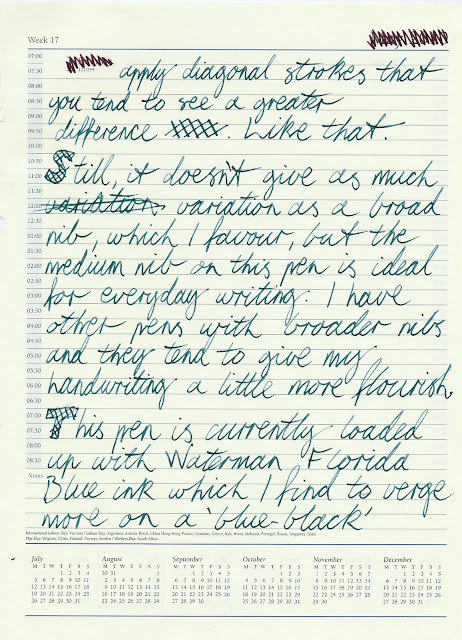I saw pictures of this pen on a fountain pen forum a couple of years ago. It has such an old-world look to it and the combination of gold and tortoise-shell works beautifully. It's not a big pen by today's standards. With the cap screwed on, it measures just under 5 inches (or twelve cm), but it has a nice weight to it when you write. It's a piston-filler, which means that you need to twist the golden section at the back of the pen to draw ink up into the internal reservoir. When held up to the light, the body of the pen is slightly see-through so that you can see how much ink you have left.
Anyway, time for the pencast portion.
Yep, it looks like brown tortoise-shell to me.
The nib is 18k yellow gold with an iridium tip. Gold is used on the nib to allow for a little bit of flex when you write.
The clip is meant to represent a Pelican's head and beak. A nice touch.
The Pelikan logo on the end of the cap.
The cap and barrel end is vermeil, which is basically gold-plated sterling silver. Nice engraving on the cap.


















































